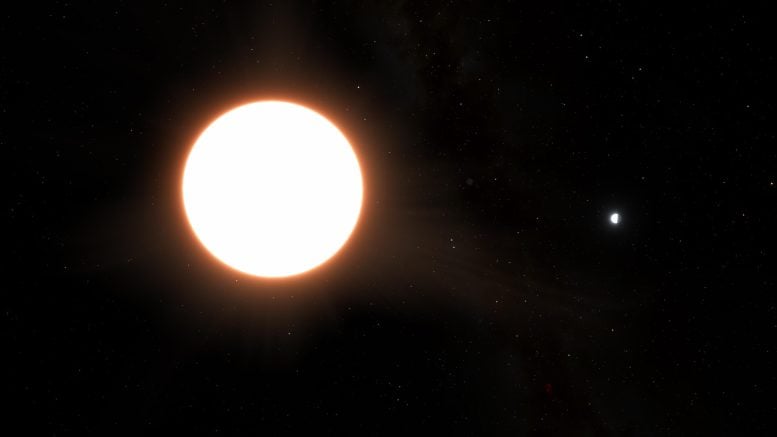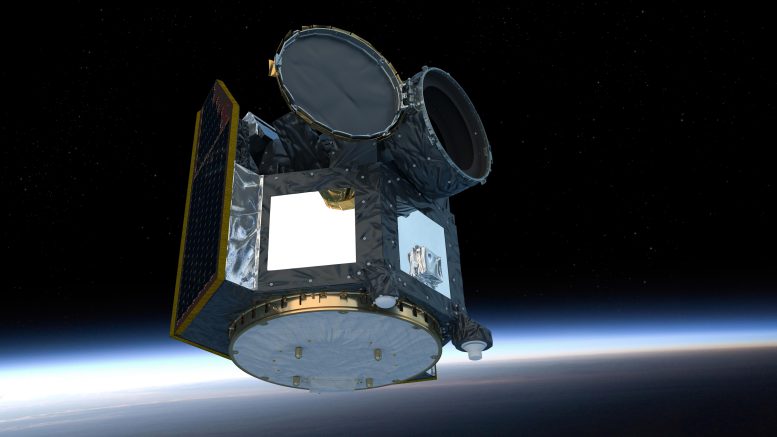ESA’s Cheops mission has discovered an ultra-hot exoplanet, LTT9779 b, with an albedo (reflectivity) of 80%, making it the shiniest exoplanet ever found. These measurements exceeded those of Venus, which has an albedo of 75%, and Earth’s 30% albedo. The heightened reflectivity of LTT9779 b is due to its metallic cloud cover, primarily composed of silicate and metals like titanium.
ESA’s Cheops mission has found LTT9779 b, the shiniest known exoplanet with an 80% reflectivity due to its metallic clouds. This ultra-hot Neptune is a unique entity due to its size and unusually close orbit to its star, prompting further studies to understand its atmosphere and survivability.
Data from ESA’s exoplanet mission Cheops has led to the surprising revelation that an ultra-hot exoplanet that orbits its host star in less than a day is covered by reflective clouds of metal, making it the shiniest exoplanet ever found.
Aside from the Moon, the brightest object in our night sky is planet Venus, whose thick cloud layer reflects around 75% of the Sun’s light. By comparison, Earth only reflects around 30% of incoming sunlight.
Now for the first time, astronomers have found an exoplanet that can match Venus’ shininess: planet LTT9779 b. New detailed measurements by ESA’s Cheops mission reveal that this planet reflects a whopping 80% of the light shone on it by its host star.
An artist impression of exoplanet LTT9779b orbiting its host star. The planet is around the size of Neptune and reflects 80% of the light shone on it, making it the largest known “mirror” in the Universe. This shininess was discovered by detailed measurements made by ESA’s Cheops of the amount of light coming from the planet-star system. Because the planet reflects starlight back to us, the amount of light reaching Cheops’ instruments slightly decreased when the planet moved out of view behind its star. This small decrease could be measured thanks to the high precision of the detectors. Credit: Ricardo Ramírez Reyes (Universidad de Chile)
Cheops’ high-precision measurements were a targeted follow-up from the planet’s initial discovery and characterization in 2020 by NASA’s TESS mission and ground-based instruments such as the ESO HARPS instrument in Chile.
The exoplanet is around the size of Neptune, making it the largest “mirror” in the Universe that we know of today. The reason for its high reflectivity is that it is covered by metallic clouds. These are mostly made of silicate – the same stuff that sand and glass are made of – mixed with metals like titanium.
“Imagine a burning world, close to its star, with heavy clouds of metals floating aloft, raining down titanium droplets,” says James Jenkins, astronomer at Diego Portales University and CATA (Santiago, Chile). James co-authored a scientific paper describing the new research, published in the journal Astronomy & Astrophysics today.
A sky filled with clouds of metal
The fraction of light that an object reflects is called its ‘albedo’. Most planets have a low albedo, either because they have an atmosphere that absorbs a lot of light, or because their surface is dark or rough. Exceptions tend to be frozen ice worlds, or planets like Venus which have a reflective cloud layer.
LTT9779 b’s high albedo came as a surprise because the planet’s side facing its star is estimated to be around 2000 °C. Any temperature above 100 °C is too hot for clouds of water to form, but the temperature of this planet’s atmosphere should even be too hot for clouds made of metal or glass.
Data from ESA’s exoplanet mission Cheops has led to the surprising revelation that an ultra-hot exoplanet that orbits its host star in less than a day is covered by reflective clouds of metal, making it the shiniest exoplanet ever found. Credit: ESA
“It was really a puzzle, until we realized we should think about this cloud formation in the same way as condensation forming in a bathroom after a hot shower,” notes Vivien Parmentier, researcher at the Observatory of Côte d’Azur (France) and co-author of this research. Vivien explains: “To steam up a bathroom you can either cool the air until water vapor condenses, or you can keep the hot water running until clouds form because the air is so saturated with vapor that it simply can’t hold any more. Similarly, LTT9779 b can form metallic clouds despite being so hot because the atmosphere is oversaturated with silicate and metal vapors.”
The planet that shouldn’t exist
Being shiny isn’t the only surprising thing about LTT9779 b. Its size and temperature make it a so-called ‘ultra-hot Neptune’, but no other planets of this size and mass have been found to orbit so close to their star. This means it lives in what’s known as the ‘hot Neptune desert’.
The planet has a radius 4.7 times as big as Earth’s, and a year on LTT9779 b takes just 19 hours. All previously discovered planets that orbit their star in less than a day are either ‘hot Jupiters’ – gas giants with a radius at least ten times larger than Earth’s – or rocky planets smaller than two Earth radii.
This is an artist’s impression of exoplanet LTT9779b orbiting its host star. The planet is around the size of Neptune and reflects 80% of the light shone on it, making it the largest known “mirror” in the Universe. This shininess was discovered by detailed measurements made by ESA’s Cheops of the amount of light coming from the planet-star system. Because the planet reflects starlight back to us, the amount of light reaching Cheops’ instruments slightly decreased when the planet moved out of view behind its star. This small decrease could be measured thanks to the high precision of the detectors. Credit: Ricardo Ramírez Reyes (Universidad de Chile)
“It’s a planet that shouldn’t exist,” says Vivien. “We expect planets like this to have their atmosphere blown away by their star, leaving behind bare rock.”
First author Sergio Hoyer of the Marseille Astrophysics Laboratory comments: “’We believe these metal clouds help the planet to survive in the hot Neptune desert. The clouds reflect light and stop the planet from getting too hot and evaporating. Meanwhile, being highly metallic makes the planet and its atmosphere heavy and harder to blow away.”
Studying an exoplanet by looking when it’s hidden
To determine LTT9779 b’s properties, ESA’s exoplanet-characterizing Cheops mission looked when the planet moved behind its host star. Because the planet reflects light, the star and planet combined send more light toward the space telescope right before the planet is out of view than right after. The difference in visible light received right before and after the planet is hidden tells you how much light the planet reflects.
This project relied on Cheops’ precision and 24/7 coverage. “Precisely measuring the tiny change in signal from the star eclipsing the planet was only possible with Cheops,” says Sergio.
Artist’s impression of Cheops, ESA’s Characterising Exoplanet Satellite, in orbit above Earth. In this view the satellite’s telescope cover is open. Credit: ESA / ATG medialab
ESA’s Cheops project scientist Maximilian Günther adds: “Cheops is the first ever space mission dedicated to the follow-up and characterization of already known exoplanets. Unlike large survey missions focused on discovering new exoplanet systems, Cheops has enough flexibility to swiftly focus on interesting targets and can reach a coverage and precision that we often simply cannot get any other way.”
By looking at the same exoplanet with different instruments, we get the full picture. “LTT9779 b is an ideal target for follow-up with the exceptional capabilities of both the Hubble and James Webb space telescopes,” notes ESA science operations scientist Emily Rickman. “They will allow us to explore this exoplanet with a wider wavelength range including infrared and UV light to better understand the composition of its atmosphere.”
The future of exoplanet research is bright, as Cheops is the first of a trio of dedicated exoplanet missions. It will be joined by Plato in 2026, which will focus on Earth-like planets orbiting at a possibly life-supporting distance from their star. Ariel is set to join the fleet in 2029 and will specialize in studying exoplanet atmospheres.
Reference: “The extremely high albedo of LTT 9779 b revealed by CHEOPS: An ultrahot Neptune with a highly metallic atmosphere” by S. Hoyer, J. S. Jenkins, V. Parmentier, M. Deleuil, G. Scandariato, T. G. Wilson, M. R. Díaz, I. J. M. Crossfield, D. Dragomir, T. Kataria, M. Lendl, R. Ramirez, P. A. Peña Rojas and J. I. Vinés, 10 July 2023, Astronomy & Astrophysics.
DOI: 10.1051/0004-6361/202346117
>>> Read full article>>>
Copyright for syndicated content belongs to the linked Source : SciTechDaily – https://scitechdaily.com/shiny-surprise-cheops-discovers-scorching-hot-exoplanet-acting-like-a-mirror/



































